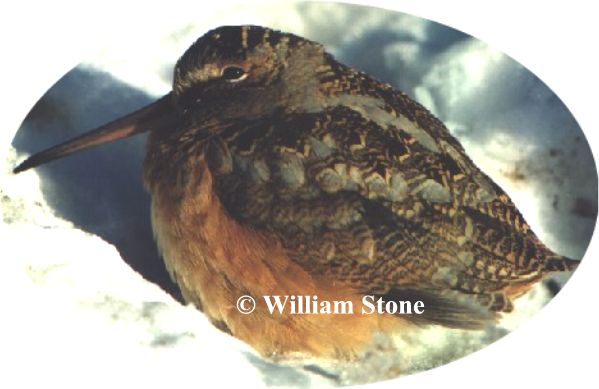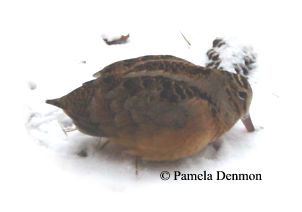
 |
|
|
The singing-ground survey provides an index to the relative size of the woodcock
breeding population in North America. It is the most important source of
data used to guide federal, state and provincial woodcock programs. As
part of their courtship behavior, male woodcock exhibit aerial and vocal
displays each evening. They begin by giving calls described as "peents"
shortly after sunset. From openings called singing-grounds birds
alternately "peent" and make flight songs. New survey
participants should become thoroughly familiar with these woodcock sounds before
running routes. Visit the Cornell Lab of Ornithology's All About Birds page to hear the song of a male
woodcock. You can also visit this YouTube website to see and hear a male woodcock peenting. There is also a recording within the training tool PowerPoint presentation. |
 |

|
Originally, survey routes were run in areas of prime habitat where woodcock were known to be present, but subsequent studies showed that these counts did not accurately reflect overall woodcock densities. Consequently, new routes were selected randomly so that all habitat types would be surveyed and results would better reflect the status of the overall woodcock population. A normal characteristic of such random surveys is that some routes will fall in unfavorable habitat, so do not become disheartened if you do not hear birds on your route. Your results are still valuable. |
Home Procedure Instructions Enter SGS or GPS Data Contact Info Acknowledgements Suggestions? FAQ
Last Updated: Please direct website questions/comments/survey related inquiries to WeblessSurveyCoordinator@fws.gov, USFWS, Division of Migratory Bird Management.